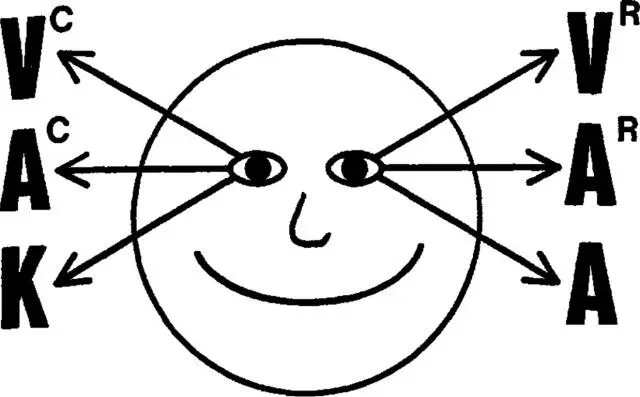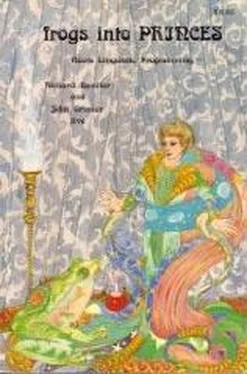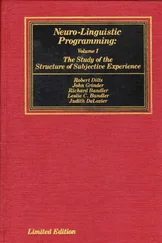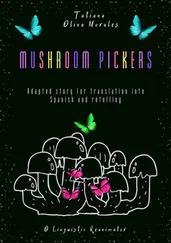Find someone you don't know, or you know minimally. One of you is going to be A and one of you is going to be B. A will begin asking questions. Make the task of learning this relatively simple for yourself by organizing your questions into sets the way I did. Start out by asking visual eidetic questions: What color are the carpets in your car? What color are your mother's eyes? What shape are the letters on the sign on the outside of this building? All of those are questions about things that people here have seen before.
Then ask questions about things that the person has not seen and will have to construct: How would you look from my point of view? How would you look with purple hair?
Then ask auditory questions: What's your favorite kind of music? Which door in your house sounds the loudest when it's slammed? Can you hear somebody very special that you are close to saying your name in a particularly delightful way? Canyou hear yourself sing "Mary Had a Little Lamb"?
Visual accessing cues for a "normally organized" right-handed person.
Those are all ways of accessing auditory experience. The cues that the person will offer you non-verbally will be systematically different from the cues they offer you to the previous sets of questions. Then ask a set of kinesthetic questions: How do you feel early in the morning? What does cat fur feel like?
Visual accessing cues for a "normally organized" right-handed person.

Vc – Visual constructed images.
Vr – Visual remembered (eidetic) images.
(Eyes unmoving and defocused also indicates visual accessing)
Ac – Auditory constructed sounds or words.
Ar – Auditory remembered sounds or words.
K – Kinesthetic feelings (also smell and taste).
A – Auditory sounds or words.
Woman: Is there a difference between the eye movements people make when they are remembering something that they've heard in the past, and when they are trying to imagine what something would sound like?
When you say "imagine" that presupposes images or pictures. Ask them to create a sound they haven't heard before. There will be a difference, yes. Discover that for yourself.
I'd like to warn you of two pitfalls. You may think that the word "think" is one representational system. It's not. The words "think, understand, be aware of, believe, sense, know," are all unspecified. Do not use those words because the response you get will be random.
You will also get confusing responses if you say "Do you remember the last time you felt the feeling of swimming through the water?" You've asked them to do two things. You've asked them to remember and then to feel . They may remember visually; that is, they may search or scan visually, they may repeat it auditorily, or they may do it directly kinesthetically. However they do it, you are going to get a two-step process. One will be the remembering portion, following your instructions, and the other will be actually recovering those feelings of swimming.
If you get responses which do not make any sense to you, ask the person what they did internally. Your job is to correlate what you can observe on the outside with the questions you ask. Correlate the relationship between the kind of information you are asking for and the non-verbal eye movement responses you're getting from your partner. If you don't understand it, ask. "I saw this on the outside. What does that correspond to in your internal processing?" If they don't know, ask them to guess.
If you're not getting the kinds of eye movements we were talking about, make the question more difficult. "What color shoes was your mother wearing the last time you saw her?" If you ask "What color are your mother's eyes" and you don't see any movement, make the question more complex. "Your eyes are blue, too. Is the color of your eyes brighter or deeper in color than your mother's eyes?" That's a more complex, comparative question. She will then have to form an image of the color of her eyes and her mother's eyes and then make a visual comparison.
After four or five minutes of asking your partner these sets of questions, you should have an idea about what eye movements you can see which indicate unequivocally which of the internal representational systems that person is utilizing at that moment. Switch roles, so that both of you have the opportunity to ask questions and observe responses. If you run into things you don't understand, we will be wandering through the room—wave to us. We will come over and assist you in making sense out of it. We are offering you generalizations, and every single generalization anyone has ever offered you is going to be false at some time and some place. The generalizations are only tricks—a smost of what we will do here is—to get you to pay attention to your experience, to notice a certain dimension of sensory experience which culturally you've been trained not to notice. Once you notice it, it constitutes a really powerful source of information about the other person's unconscious processes.
You will find people who are organized in odd ways. But even somebody who is organized in a totally different way will be systematic; their eye movements will be systematic for them. Even the person who looks straight up each time they have a feeling and straight down each time they have a picture, will remain consistent within themselves. The important thing is that you have the sensory experience to notice who is doing what. Go ahead now and discover what, if any, patterns you can discover.
* * * * *
OK. How did the exercise go? Many of you are nodding. Some of you had difficulties, or questions, or were perplexed by some of the things you saw. Let's have those. Those are more interesting.
Woman: We found that we could learn as much by watching the questioner as the listener. By watching the questioner's eyes we could predict what kind of question we were about to be asked.
Man: When I asked my partner, Chris, an auditory question, she went up and visualized.
Do you remember the question you asked?
Man: "What are the first four notes of Beethoven's Fifth Symphony?"
OK. Now, did other people have the same experience? Some of you asked people auditory questions, or kinesthetic questions, and you noticed them visually accessing and then giving you auditory or kinesthetic information. Do you have an understanding of what was happening? Chris, what did you do? Did you read it off the score? Did you see a record player or did you see an album?
Chris: I heard it.
You heard it. OK. Were you aware of starting with any kind of picture whatsoever? If the rest of you are watching, this is one of those interesting discrepancies between her consciousness and what she's offering us non-verbally.
Chris, do you know what the second four notes of Beethoven's Fifth are? OK, you know what they are.
Woman: Ah, that might be a spatial thing for her.
Can you give us a sensory correlate for the word "spatial'? Whether it'sthe notion of looking "pensive" or that's a "spatial" thing, what we're going to ask you to do, since we all have different understandings of those words, is to use words either before or after the judgements that you make which we can agree or disagree with. What is it you saw or heard or felt?
Woman: Well, when I did it, I went "da da da DUM," you know, and I looked at the spatial interval. I wasn't seeing the notes.
Those of you who had partners who had this kind of experience, check with them. I will guarantee the following was going on. They searched and found a visual image which somehow represented the experience they were looking for. From that image, by simply imitating the image or stepping into it, they then had the feelings or sounds which were appropriate for that particular visual experience.
Читать дальше












